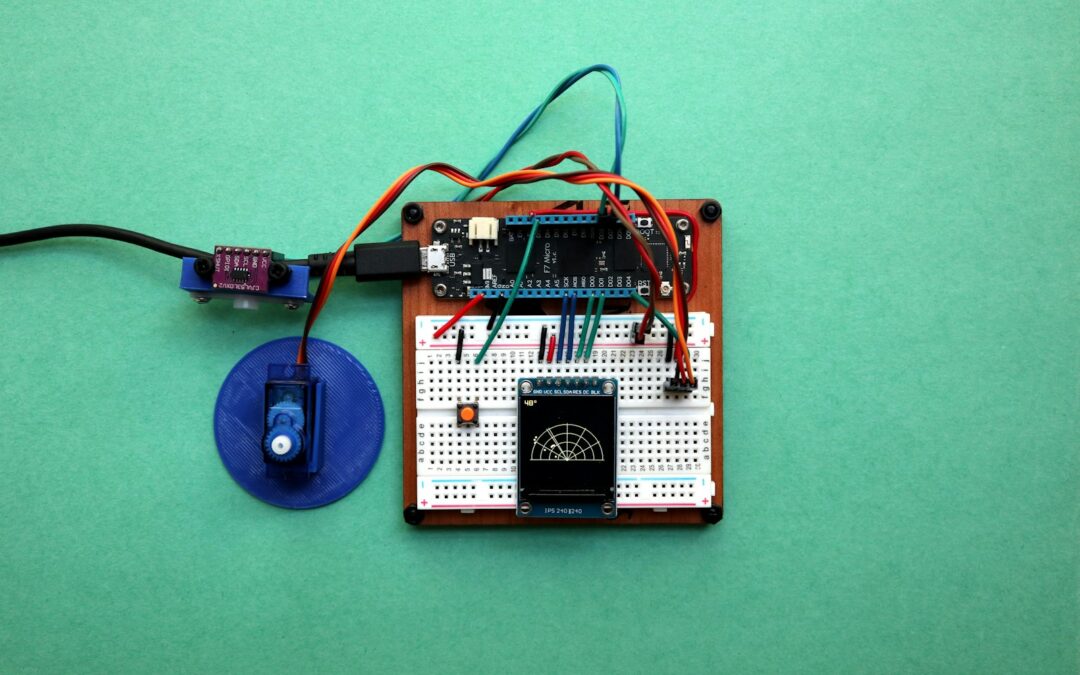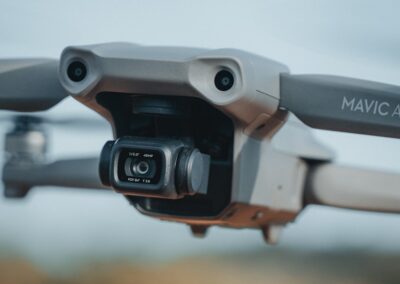Transforming Supply Chain Efficiency through Smart Logistics
The Impact of IoT-Enabled Sensors on Logistics Systems
IoT-enabled sensors for logistics systems are revolutionizing the way goods are tracked and managed in transit, offering unprecedented levels of visibility and control over supply chain operations. In regions like Saudi Arabia, the UAE, and other key global markets, the adoption of IoT technology is driving significant advancements in logistics management, allowing businesses to optimize their operations and improve overall efficiency. These sensors provide real-time data on the location, condition, and status of goods, enabling companies to make informed decisions and respond quickly to any issues that arise during transit.
One of the primary benefits of integrating IoT-enabled sensors into logistics systems is the ability to monitor goods in real-time. These sensors can track the precise location of shipments, monitor environmental conditions such as temperature and humidity, and detect any potential tampering or security breaches. For example, in the logistics hubs of Dubai and Riyadh, where high-value goods are frequently transported, IoT sensors can provide an added layer of security by alerting operators to any anomalies in the shipment’s journey. This level of transparency is crucial for industries such as pharmaceuticals, electronics, and perishable goods, where maintaining the integrity of products is essential.
Moreover, IoT-enabled sensors facilitate the efficient management of logistics by automating various processes and reducing the need for manual intervention. By providing real-time updates on the status of shipments, these sensors allow companies to streamline their operations, reduce delays, and improve customer satisfaction. In the competitive markets of the Middle East, where timely delivery is a critical factor in business success, the ability to optimize logistics processes through IoT technology can provide a significant competitive advantage.
Optimizing Supply Chain Management with IoT Technology
The integration of IoT-enabled sensors for logistics systems offers transformative potential for supply chain management, particularly in regions like Saudi Arabia and the UAE, where logistics play a crucial role in economic growth. By leveraging real-time data provided by these sensors, companies can enhance their supply chain visibility, improve inventory management, and optimize route planning. This not only reduces operational costs but also minimizes the risk of disruptions in the supply chain, ensuring that goods are delivered on time and in optimal condition.
IoT-enabled sensors provide critical data that can be used to optimize inventory management. For instance, sensors can monitor stock levels in real-time and automatically trigger reordering processes when inventory falls below a certain threshold. This ensures that companies maintain optimal stock levels, reducing the risk of stockouts or overstocking. In regions like Riyadh, where demand for goods can fluctuate rapidly, having a responsive inventory management system enabled by IoT technology can be a game-changer for businesses seeking to maintain a competitive edge.
Route optimization is another key benefit of integrating IoT technology into logistics systems. Sensors can track traffic conditions, weather patterns, and other factors that may affect the delivery of goods. By analyzing this data in real-time, companies can adjust routes to avoid delays and ensure timely delivery. For example, in the bustling logistics networks of Dubai, where efficient route planning is essential to meet tight delivery schedules, IoT-enabled sensors can provide valuable insights that enhance overall supply chain efficiency.
Improving Goods Tracking and Security with IoT
One of the most significant challenges in logistics management is ensuring the security and integrity of goods during transit. IoT-enabled sensors for logistics systems address this challenge by providing continuous monitoring and real-time alerts in case of any discrepancies. This is particularly important for high-value or sensitive goods, where even minor deviations in environmental conditions or unauthorized access can result in significant financial losses.
IoT-enabled sensors can monitor various parameters such as temperature, humidity, and shock, ensuring that goods are transported under optimal conditions. For example, in the pharmaceutical industry, where maintaining a consistent temperature is critical for the efficacy of medications, IoT sensors can detect any deviations from the required temperature range and alert operators to take corrective action. This not only prevents spoilage but also ensures that products meet regulatory compliance standards, which are particularly stringent in markets like the UAE and Saudi Arabia.
In addition to environmental monitoring, IoT sensors enhance the security of goods in transit by detecting and reporting any unauthorized access or tampering. For instance, if a shipment is opened unexpectedly or if the route deviates from the planned path, the sensors can immediately notify the relevant authorities. This capability is invaluable in preventing theft and ensuring the safe delivery of goods. In regions where security is a top priority, such as in the logistics corridors of the Middle East, the implementation of IoT-enabled sensors can significantly reduce the risk of cargo theft and enhance overall supply chain security.
The Future of IoT-Enabled Logistics in the Middle East
Challenges and Opportunities in IoT Integration
While the benefits of IoT-enabled sensors in logistics systems are clear, their integration into existing supply chain operations presents several challenges. One of the primary obstacles is the need for significant investment in infrastructure and technology. Many companies may be hesitant to adopt IoT technology due to the perceived costs and complexity of implementation. However, the long-term benefits, including improved tracking, enhanced security, and optimized supply chain management, often outweigh the initial investment.
In the Middle East, particularly in countries like Saudi Arabia and the UAE, government initiatives are supporting the adoption of IoT technology in logistics. Programs such as Saudi Vision 2030 and the UAE’s National Innovation Strategy emphasize the importance of digital transformation in driving economic growth. These initiatives provide a supportive environment for companies to invest in IoT-enabled solutions, offering both financial incentives and access to cutting-edge technology. As a result, the adoption of IoT in logistics is expected to accelerate, creating new opportunities for innovation and growth.
Moreover, the integration of IoT technology opens up new opportunities for collaboration and innovation across the logistics ecosystem. As more companies adopt IoT-enabled sensors, there will be increased demand for expertise in data analytics, cybersecurity, and systems integration. This creates opportunities for technology providers, consultants, and educators to develop new solutions and services that support the growing IoT ecosystem. In this context, cities like Riyadh and Dubai are poised to become global hubs for smart logistics and supply chain innovation.
Strategic Advantages of IoT-Enabled Logistics
The strategic advantages of implementing IoT-enabled sensors for logistics systems extend beyond immediate operational improvements. By embracing IoT technology, companies can position themselves as leaders in innovation, efficiency, and customer satisfaction. This is particularly important in competitive markets where differentiation is key to maintaining a competitive edge.
One of the most significant strategic advantages is the ability to offer higher levels of service to customers. IoT-enabled sensors ensure that goods are tracked and managed with precision, resulting in fewer delays, fewer lost shipments, and more accurate delivery times. This not only enhances customer satisfaction but also builds trust and loyalty, which are critical factors in maintaining long-term business relationships.
Additionally, IoT-enabled logistics align with the broader trend towards Industry 4.0, where the convergence of digital technologies is driving the next wave of industrial innovation. By adopting IoT technology, companies can create a fully connected and intelligent logistics network where data flows seamlessly between systems, enabling greater flexibility, scalability, and responsiveness to changing market demands. This level of integration ensures that companies remain competitive in the global marketplace, particularly in regions like the Middle East, where logistics play a vital role in economic development.
In conclusion, the integration of IoT-enabled sensors with logistics systems offers a powerful solution for improving the tracking and management of goods in transit. As demonstrated by the success stories from industries across Saudi Arabia, the UAE, and beyond, IoT technology is transforming the logistics landscape by providing real-time insights and enabling data-driven decision-making. While challenges remain, the strategic advantages of IoT-enabled logistics are clear, and companies that invest in this technology today are likely to lead the industry in the future.
#IoT #Logistics #SupplyChainManagement #SmartLogistics #GoodsTracking #Efficiency #RealTimeMonitoring































